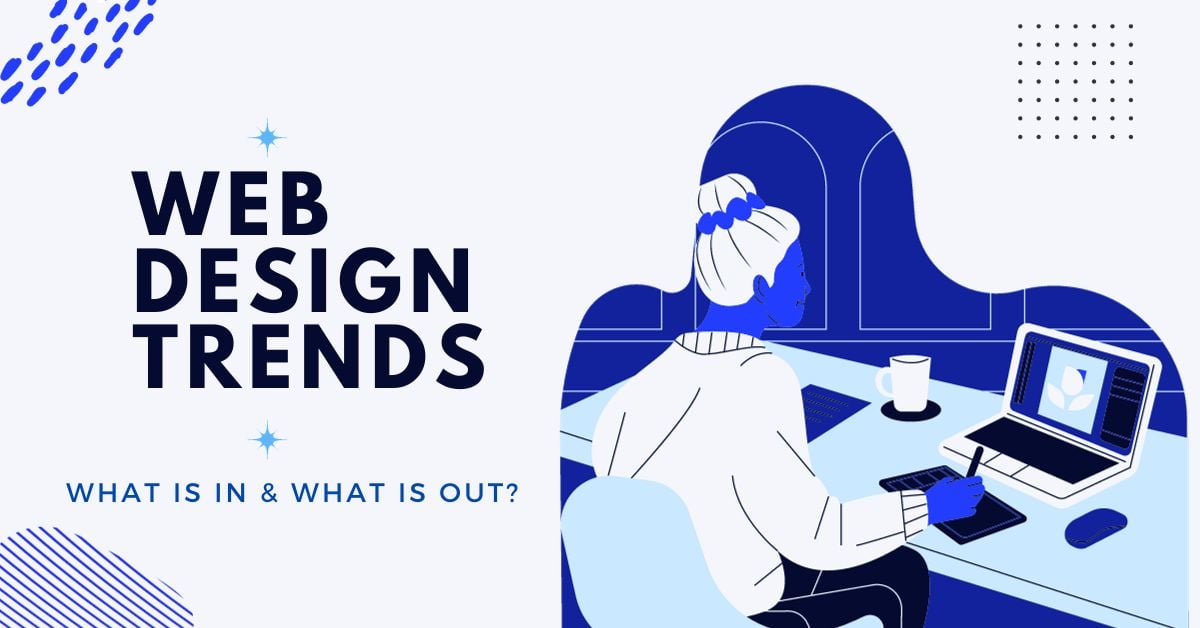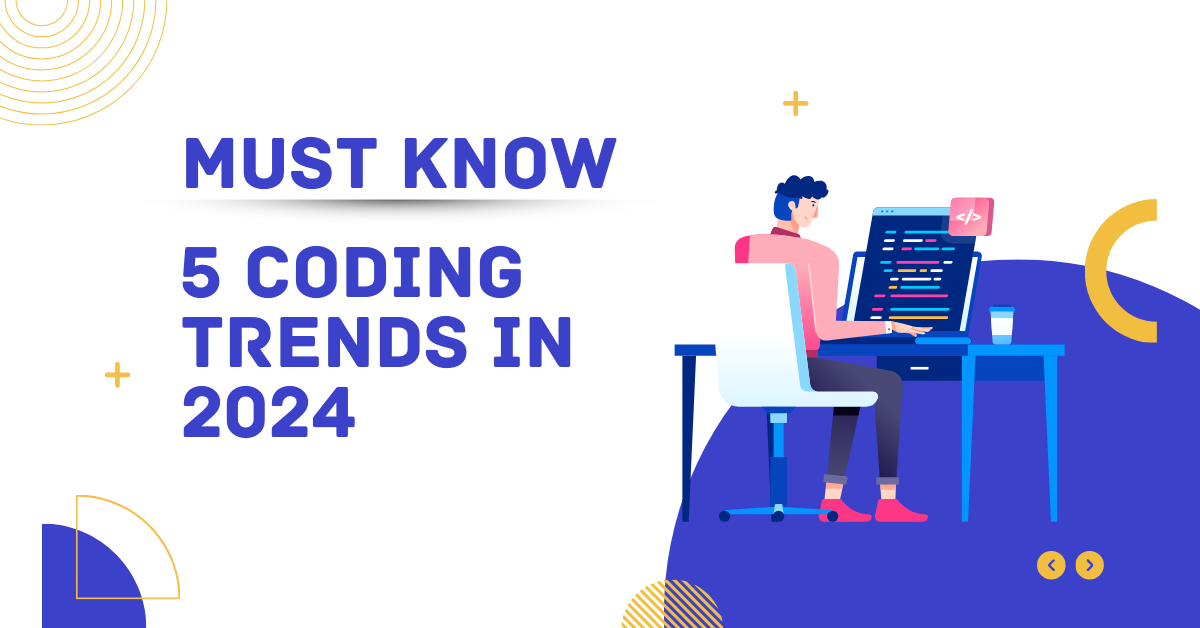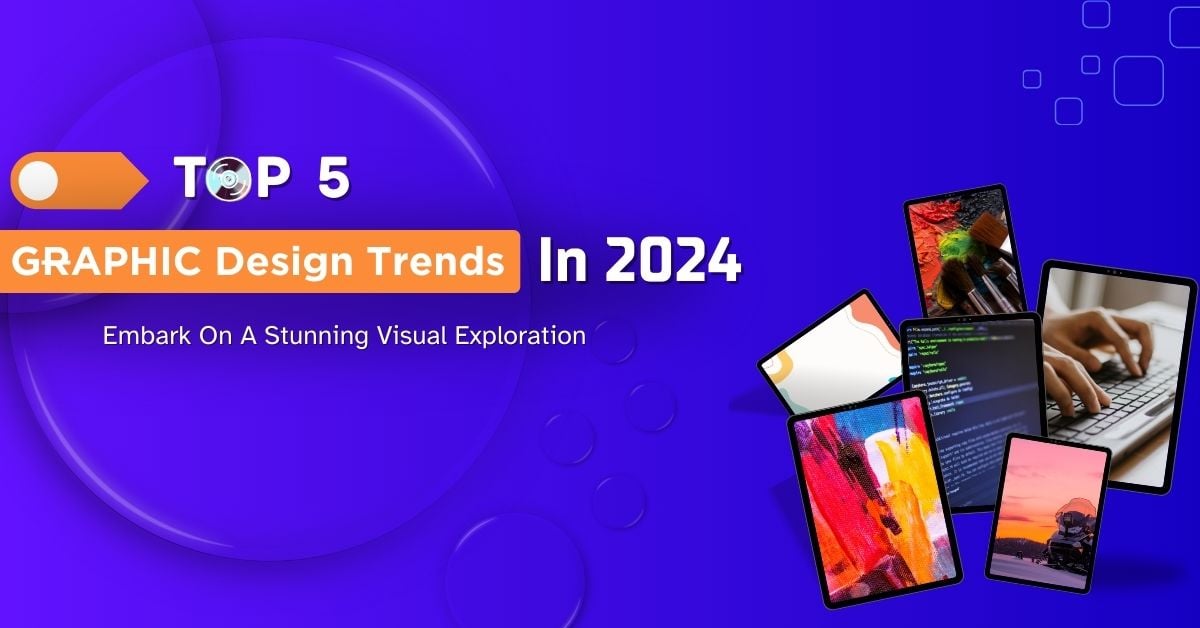Web Design is as important to your website as a snazzy outfit is to a superhero! Imagine your favorite superhero, say, Batman decided to fight crime in his pajamas. It might still get the job done, but nothing beats the impact of a tight fit with a cape. Similarly, a well-designed website leaves a lasting impact, establishes credibility, and fulfills fundamental user needs.
But, you see, web design is an ever-evolving world. Hence, it’s crucial to stay ahead of the curve by keeping up with the latest web design trends. If you are an aspiring web designer, who is looking for the latest trend and outdated trends to decide what’s best for your website, then look no further. We’ve got you covered.
Here, we bring all the Web Design trends for 2023 and 2024, including insights regarding what’s in and what’s out.
Out with the Old
As we welcome new trends, we bid farewell to some old web designs that have become outdated. Before we jump into what’s raving now, let’s take a look at a few web design trends from the past that we’re happily leaving behind.
- The Image Button: Back in early 2000, flashy and cluttered design reigned supreme. However, fast forward to today, we can happily say that those days are long gone. With the rise of CSS3, this trend got buried away and for good.
- iFrames: iFrames, short for “inline frames,” were a web design element that allowed a web page to embed another web page or content from an external source within a designated frame on the page. However, iFrames became an outdated web design trend due to their complexity, potential navigation issues, slower page loading, and challenges with SEO.
- Scrolling Text/Marquee: A scrolling text or image effect often used to draw attention to content became outdated due to its obtrusiveness and not being user-friendly to mobile users.
- Hit Counters: Hit counters display the number of visitors to a website. They lost popularity as they didn’t provide meaningful metrics, cluttered the page, and raised privacy concerns. Web analytics tools have since become the preferred method for tracking website traffic.
- Too Much Text: This web design trend can overwhelm visitors and hinder user experience. Hence, web designers intend to keep the text short and purposeful, typically within a limit of around 300 words for most pages, with some exceptions.
- No Clear Calls to Action: A call to action (CTA) serves as a concise prompt to guide visitors toward taking a specific action. A lack of clear calls to action on a website can lead to visitor confusion, higher bounce rates, lost sales, etc.
In with the New: Web Design Trends for 2023 and 2024
In this ever-changing realm of web design, while some go through the exit door, some are welcomed and are here to stay for a while. So, let’s look at some popular web design trends for 2023 and 2024.
- Increased Web Accessibility: Web accessibility takes center stage in 2023 due to updated guidelines from the U.S. Department of Justice concerning the Americans with Disabilities Act (ADA). These guidelines emphasize the importance of making websites accessible to all users. This trend calls for features like captions for videos, ensuring that visually impaired individuals can comprehend content and navigate websites seamlessly.
- Hoverable Iconography: Interactive design elements have gained immense popularity, and hoverable iconography is no exception. This trend allows users to interact with icons, providing extra information or animations when they hover their cursor over them. It adds a layer of engagement and interactivity to your website.
- Artificial Intelligence (AI): AI is transforming various aspects of web design, particularly in UX and UI. Designers now face requests to create visually appealing chatbots that serve as virtual assistants, enhancing user engagement. As AI tools continue to advance, they offer designers the potential to make more informed decisions, streamline processes, and reduce design time, even if AI isn’t a direct part of the project.
- Minimalism: Minimalism reigns supreme in 2023, catering to users who prefer clean and straightforward design. Minimalist websites employ limited color palettes and only essential design elements. The tricky part is finding the right balance to maintain visual appeal and functionality.
- Microinteractions: Microinteractions enhance the user experience by requiring minimal effort from users to engage with a website. Progress indicators, for example, guide users through multi-step processes, improving user experience and eliminating confusion.
- Mobile-Friendly Designs: The importance of mobile-friendly designs continues to grow as the majority of users access websites via smartphones and tablets. Having designs that work on all kinds of gadgets and making it easy for thumbs to get around are pivotal in retaining users and preventing revenue loss.
- Augmented Reality (AR): Augmented reality is making its mark in web design, offering immersive experiences by combining computer-generated content with the real world. Brands like Amazon and IKEA are using AR to help users virtually try on products and plan room layouts. It increases user engagement and reduces returns by allowing customers to make informed decisions.
- Dark Mode: Dark mode, though not new, is more popular than ever. Users appreciate the option to read light text on a dark background, and designers find it a creative playground. This trend allows for more experimentation and creativity, giving websites a fresh and contemporary look.
- Readapting The 404: The 404 error page is often overlooked, but it’s a crucial part of the user experience. In 2023, we’re seeing more creativity in readapting the 404 page. Designers are using this as an opportunity to showcase their brand’s personality and keep users engaged, even when something goes wrong.
Incorporating these web design trends for 2023 and beyond into your work will not only keep your designs relevant but also ensure a superior user experience, helping you stand out in an increasingly competitive digital world.
As an aspiring web designer, staying informed about the latest trends in the field is essential for your success. The web design trends for 2023 and 2024 are all about engaging users, building credibility, and creating visually stunning, memorable experiences.
Remember to keep experimenting, pushing boundaries, and embracing the trends that resonate with your unique style and the needs of your clients.
Whether you’re incorporating social proof or experimenting with hoverable iconography, the world of web design in 2023 and 2024 is a place where creativity knows no bounds. With these trends, you’re well-equipped to take on the challenges and opportunities that web design has to offer.
Stay inspired, keep learning, and enjoy the journey as you become a web design trendsetter in 2023 and beyond.







